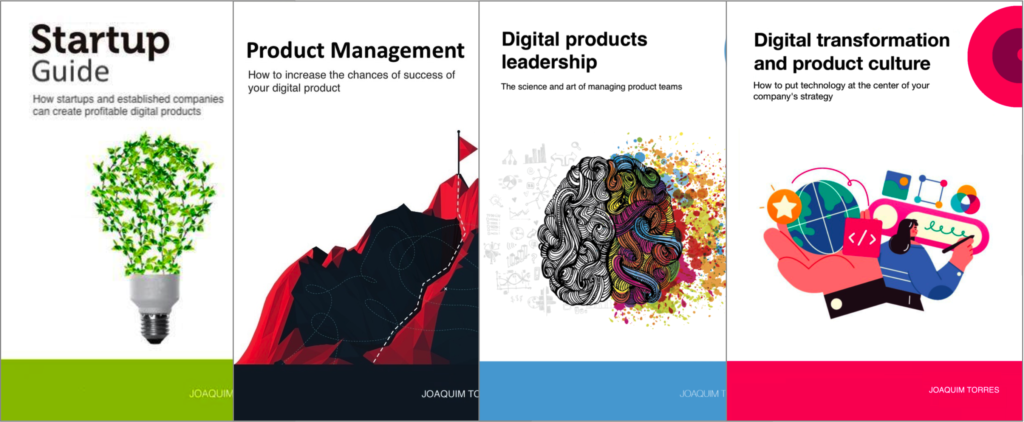Not Every Interface Needs to Be Conversational
14 de October, 2025Smart Boards: The Role of AI in the New Era of Corporate Governance
28 de October, 2025This is the fifth and last article in my series about AI and product management. Here are the previous ones:
- AI Is Not Just About Productivity: where I explain that AI is a technology that, beyond increasing productivity across all areas of a company, should also be considered when building intelligent products — products that help us solve customer problems while generating results for the business.
- Not Every Feature Needs AI: in this article, I explain the difference between deterministic and probabilistic solutions — the latter being AI-based. In certain situations, deterministic solutions are more suitable, while in others, probabilistic ones are more appropriate.
- Not Every AI Is Generative: beyond generative AI, which creates text, images, videos, music, and even code, there’s also analytical AI, used for years to make recommendations, identify patterns, and predict trends.
- Not Every Interface Needs to Be Conversational: the form of interaction should serve the user’s context and goal, not the hype of the technology. Conversational interfaces work well in contexts where flexibility, ambiguity, or exploration are integral to the experience.
To wrap up the series, let’s look at the difference between AI-First and AI-Native.
As artificial intelligence becomes part of product discussions, different approaches emerge on how to integrate it into development.
An AI-First product is one in which AI is a component. It can be added to improve the experience, increase efficiency, or create new functionalities. It’s not the foundation of the product, but rather an element that makes it smarter.
A good example is Gmail’s Smart Compose, which suggests sentences as you type. The product is still Gmail — AI is there to enhance an existing task.
Another example is the property similarity algorithm at Lopes. It existed before AI, in a deterministic form, using only three static variables (location, type, and price) to find similar properties in Lopes’ database. Later, we applied AI to the algorithm, expanding the analysis to ten variables and using machine learning to learn from user clicks and improve future recommendations. This change generated significant results — increasing clicks on similar properties by 106% and leads by 20%.
But it’s important not to confuse AI-First at the product level with AI-First as a company mindset. In the latter case, AI-First means adopting a way of thinking and operating where teams constantly look for how AI can make every activity — from customer service to planning — more productive. It’s when the question “How can we solve this with AI?” becomes part of everyday work.
AI-Native: when the product is born from AI
An AI-Native product, on the other hand, is different. It wouldn’t exist without AI. Artificial intelligence isn’t a component that gets added later; it’s the core that gives rise to the product. Without AI, there would be no value, no experience, and no product.
That’s the case with tools like ChatGPT, DoNotPay, and Dieta.ai, which were designed from the start to operate based on AI models — whether generative or analytical.
In Zapando, a product I recently developed for managing goals and tasks, several features are AI-native. The tool uses AI to interpret natural language, generate automatic insights about user goals, and suggest tasks to help them achieve those goals. It’s not an added layer; it’s the essence of the product.
That’s the true spirit of AI-Native: products where AI doesn’t complement the experience. It creates it.
Conclusion
Understanding the difference between AI-First and AI-Native helps companies plan their initiatives more effectively. The first represents a step forward — incorporating AI to increase efficiency and value. The second is a paradigm shift — building something that’s only possible because of AI.
And, as in any product journey, the starting point isn’t the technology — it’s the problem we want to solve. Now we have AI as a technology to help us build better products, those that solve customer problems more effectively while generating better results for the company.
More than adopting AI, it’s about understanding where it truly makes a difference, and building from there.
Workshops, coaching, and advisory services
I’ve been helping companies and their leaders (CPOs, heads of product, CTOs, CEOs, tech founders, and heads of digital transformation) bridge the gap between business and technology through workshops, coaching, and advisory services on product management and digital transformation.
Gyaco Podcasts
At Gyaco, we believe in the power of conversations to spark reflection and learning. That’s why we have three podcasts that explore the world of product management from different angles:
- Produto em Pauta: In the new season, titled “Beyond the Buzzwords”, Felipe Castro and I demystify product terms with real examples from our clients. Available on YouTube and Spotify. Recorded in Portuguese, with English subtitles on YouTube.
- Product Chronicles, the Brazilian Way: with Fábio Martinelli Duarte and Paulo Caroli — the Brazilian way of building products: stories, challenges, and lessons learned, featuring case studies from our clients. Available on YouTube and Spotify. Recorded in English, with Portuguese subtitles on YouTube.
- Beyond the Article, Expanded by AI: C.L.A.R.A. (Creative Language AI for Reflective Augmentation) chats with my AI clone, JocAI, expanding on my articles with new perspectives. Available on YouTube and Spotify. Thanks to AI, episodes are available in English, Spanish, and Portuguese.
Digital Product Management Books
Do you work with digital products? Do you want to know more about managing a digital product to increase its chances of success, solve its user’s problems, and achieve the company objectives? Check out my Digital Product Management books, where I share what I learned during my 30+ years of experience in creating and managing digital products:
- Digital transformation and product culture: How to put technology at the center of your company’s strategy
- Leading Product Development: The art and science of managing product teams
- Product Management: How to increase the chances of success of your digital product
- Startup Guide: How startups and established companies can create profitable digital products

